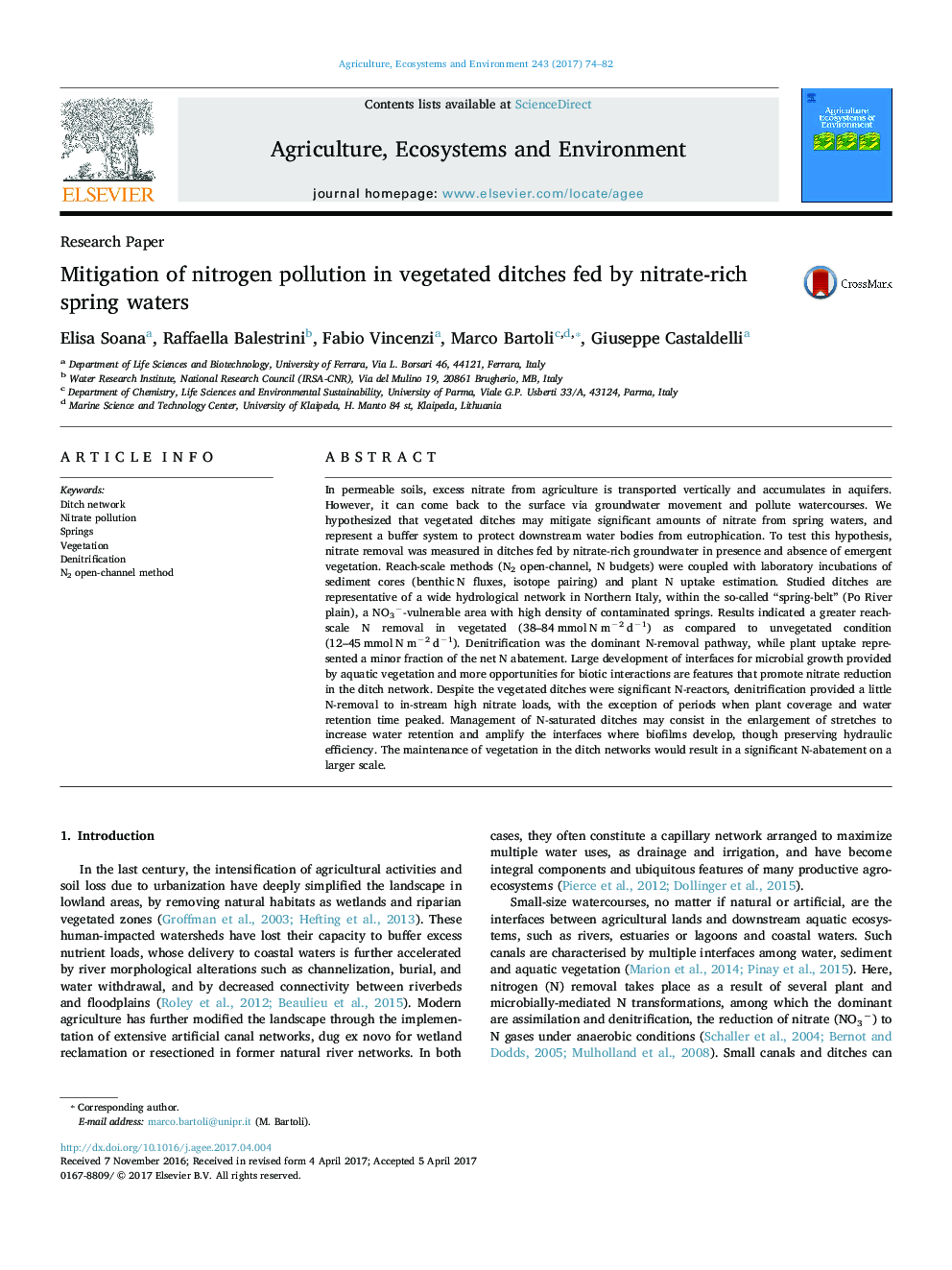| کد مقاله | کد نشریه | سال انتشار | مقاله انگلیسی | نسخه تمام متن |
|---|---|---|---|---|
| 5537830 | 1552009 | 2017 | 9 صفحه PDF | دانلود رایگان |
عنوان انگلیسی مقاله ISI
Mitigation of nitrogen pollution in vegetated ditches fed by nitrate-rich spring waters
ترجمه فارسی عنوان
کاهش آلودگی نیتروژن در گیاهان روغنی که به وسیله ی آبهای بهاره نیترات غنی می شوند
دانلود مقاله + سفارش ترجمه
دانلود مقاله ISI انگلیسی
رایگان برای ایرانیان
کلمات کلیدی
موضوعات مرتبط
علوم زیستی و بیوفناوری
علوم کشاورزی و بیولوژیک
علوم زراعت و اصلاح نباتات
چکیده انگلیسی
In permeable soils, excess nitrate from agriculture is transported vertically and accumulates in aquifers. However, it can come back to the surface via groundwater movement and pollute watercourses. We hypothesized that vegetated ditches may mitigate significant amounts of nitrate from spring waters, and represent a buffer system to protect downstream water bodies from eutrophication. To test this hypothesis, nitrate removal was measured in ditches fed by nitrate-rich groundwater in presence and absence of emergent vegetation. Reach-scale methods (N2 open-channel, N budgets) were coupled with laboratory incubations of sediment cores (benthic N fluxes, isotope pairing) and plant N uptake estimation. Studied ditches are representative of a wide hydrological network in Northern Italy, within the so-called “spring-belt” (Po River plain), a NO3â-vulnerable area with high density of contaminated springs. Results indicated a greater reach-scale N removal in vegetated (38-84 mmol N mâ2 dâ1) as compared to unvegetated condition (12-45 mmol N mâ2 dâ1). Denitrification was the dominant N-removal pathway, while plant uptake represented a minor fraction of the net N abatement. Large development of interfaces for microbial growth provided by aquatic vegetation and more opportunities for biotic interactions are features that promote nitrate reduction in the ditch network. Despite the vegetated ditches were significant N-reactors, denitrification provided a little N-removal to in-stream high nitrate loads, with the exception of periods when plant coverage and water retention time peaked. Management of N-saturated ditches may consist in the enlargement of stretches to increase water retention and amplify the interfaces where biofilms develop, though preserving hydraulic efficiency. The maintenance of vegetation in the ditch networks would result in a significant N-abatement on a larger scale.
ناشر
Database: Elsevier - ScienceDirect (ساینس دایرکت)
Journal: Agriculture, Ecosystems & Environment - Volume 243, 1 June 2017, Pages 74-82
Journal: Agriculture, Ecosystems & Environment - Volume 243, 1 June 2017, Pages 74-82
نویسندگان
Elisa Soana, Raffaella Balestrini, Fabio Vincenzi, Marco Bartoli, Giuseppe Castaldelli,
